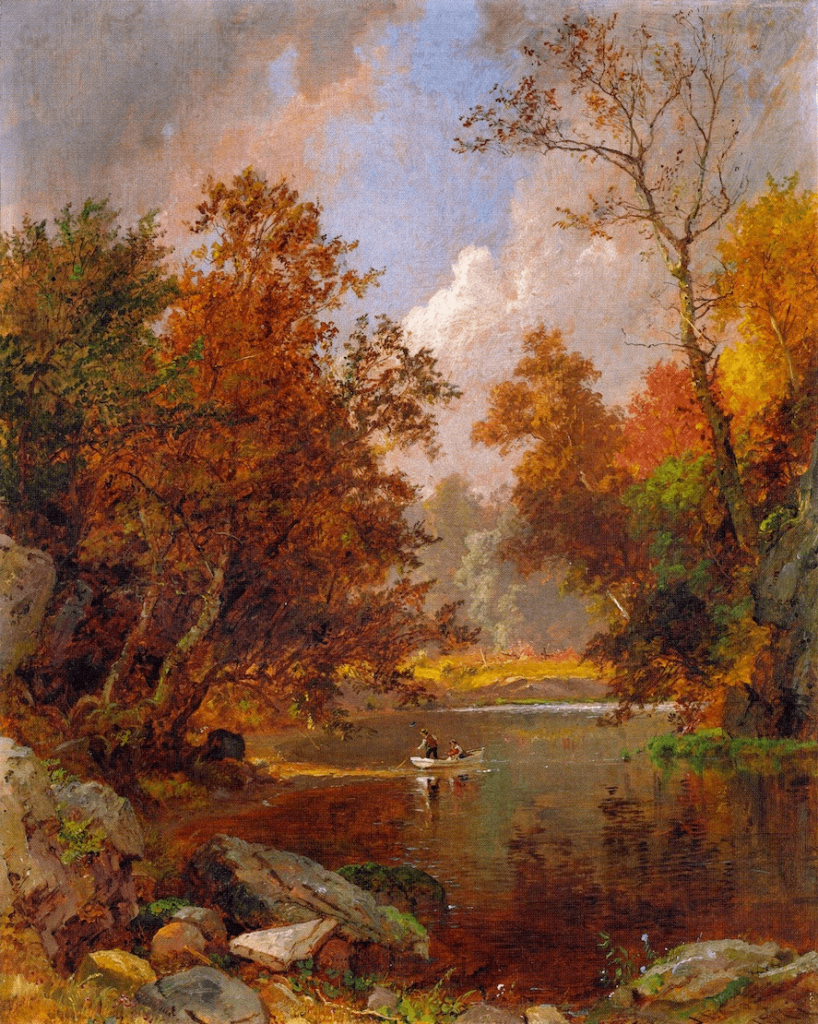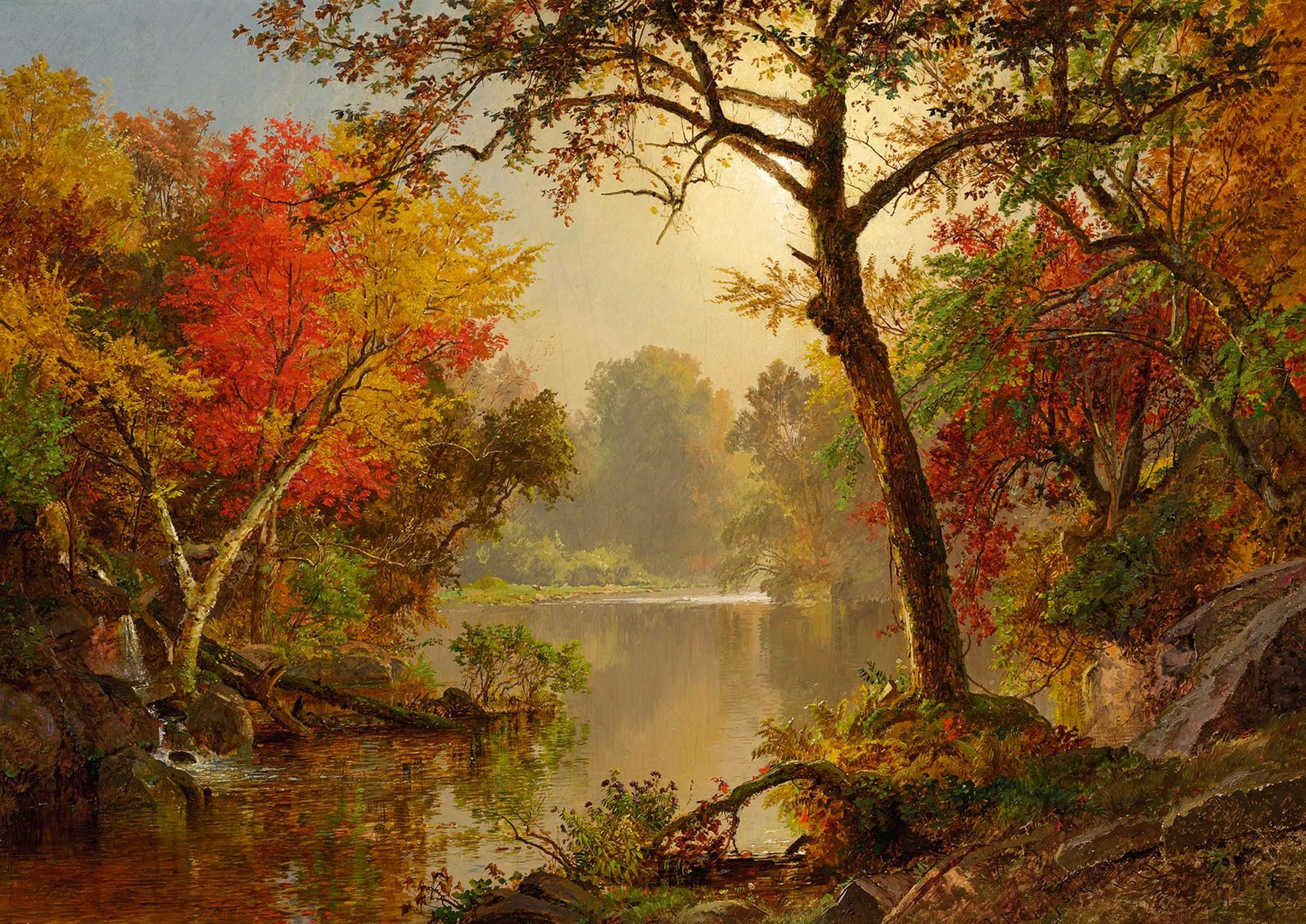Autumn weather is fickle. Some days the sky is crystal clear and the sun is golden. Other days the clouds hang low and a gray mist lingers around the deciduous trees. Whether autumn is happy or sad, the scenery is bright or gloomy, it seems to reflect the mood of the person.
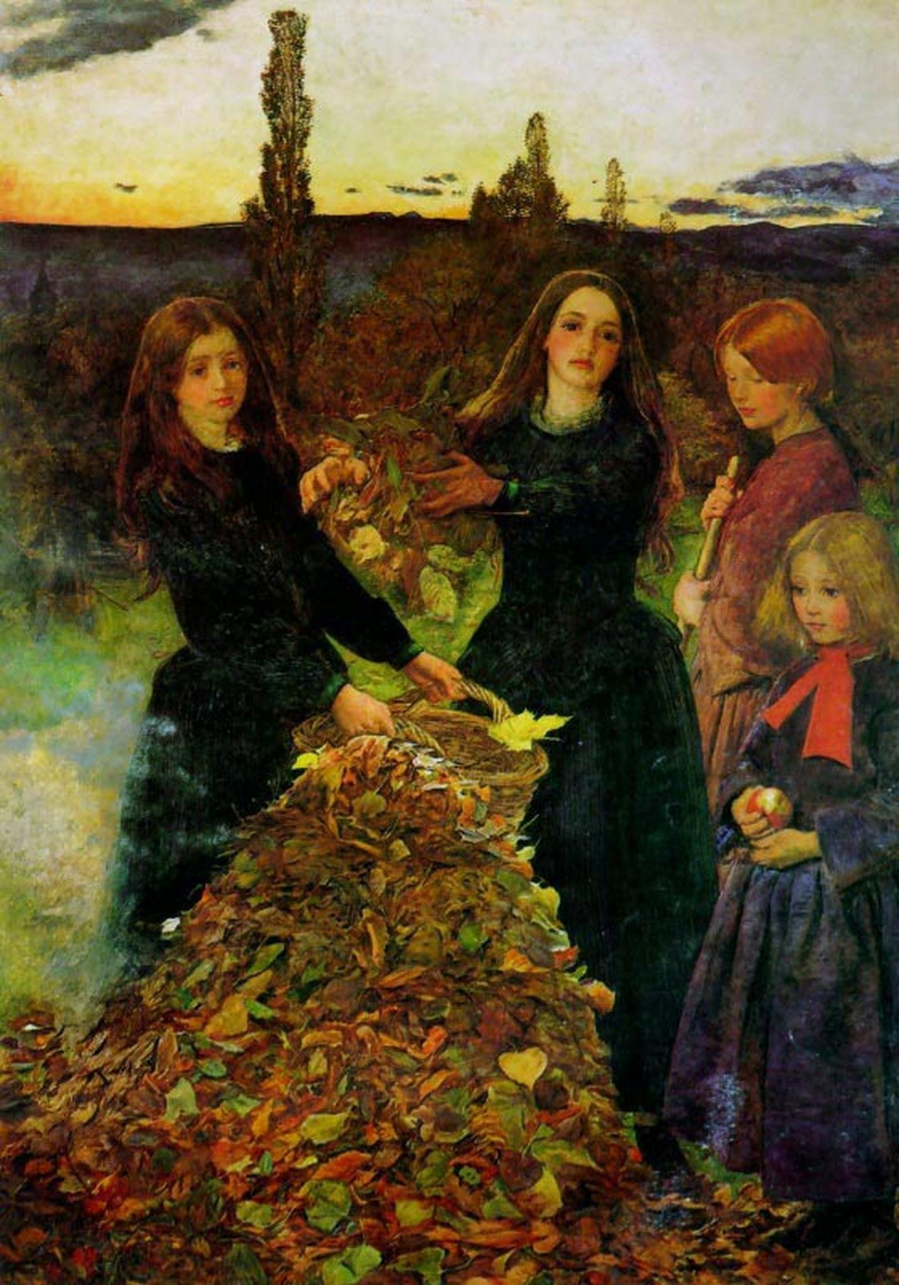
Autumn Leaves (John Everett Millais, 1855)
John Everett Millais captured the unique emotions of autumn in two paintings:Autumn leaves(1855) andCold October(1870). Both paintings were painted in Perth, Scotland, where Millais lived. InAutumn leaves, four young women are gathering leaves, piling them into a pile and lighting a bonfire. Clumps of gray smoke begin to rise. The back garden is dark with tall, slender trees, here and there a few clouds like green silk against the sky that is glowing orange-yellow. The setting sun disappears from the faces of the young women. Their cheeks are rosy as if tinged with the red of the leaves. The viewer seems to feel the crisp rustling of the leaves, the warm smoke rising in the chilly afternoon. Millais painted many types of leaves, of all shapes and colors, falling, arranged in layers, as if signaling the moment of changing seasons, and also evoking thoughts of youth, brilliant for a moment then quickly fading with the unchanging flow of time.

Cold October (John Everett Millais, 1870)
Cold Octoberevokes the viewer's perception of both weather and mood, conveyed in the Northern autumn landscape. A sky dotted with a few pale clouds reflects on the calm Tuy River. From the riverbank, the water is just a strip of light leading straight to the hazy green hill in the distance. A small strip of land in the middle of the river with rows of trees, thick reeds along the banks like a golden carpet, layer upon layer, seems to isolate the viewer outside the painting, on the side of loneliness, coldness and gloom.
But hidden insideCold Octoberthere is still a quiet beauty, in the clouds glowing a gentle pearl color, in the distant birds flying freely, set against the vast, wild background of the golden reeds by the water. In the sadness of autumn, there is still hope.

Autumn Landscape (Vincent van Gogh, 1885)
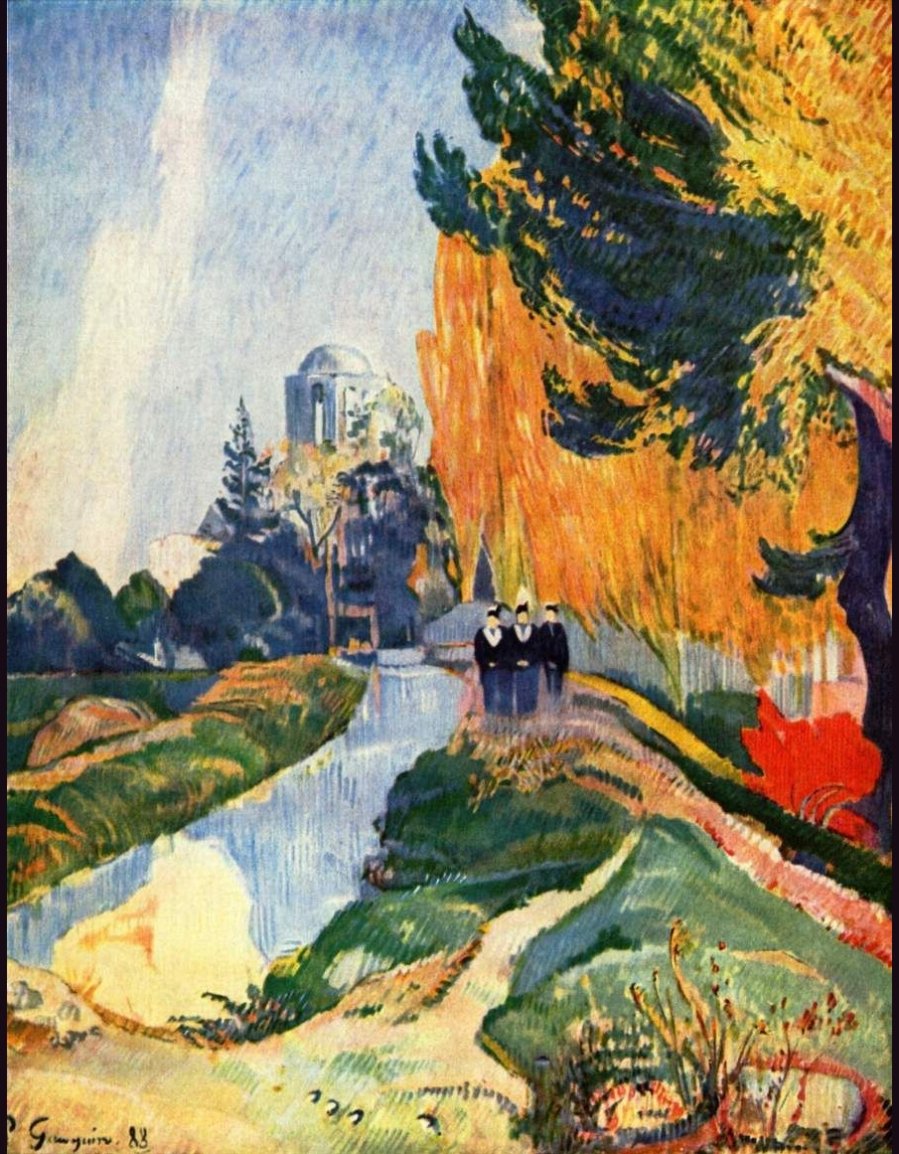
Landscape in Arles near the Alyscamps (Paul Gauguin, 1888)
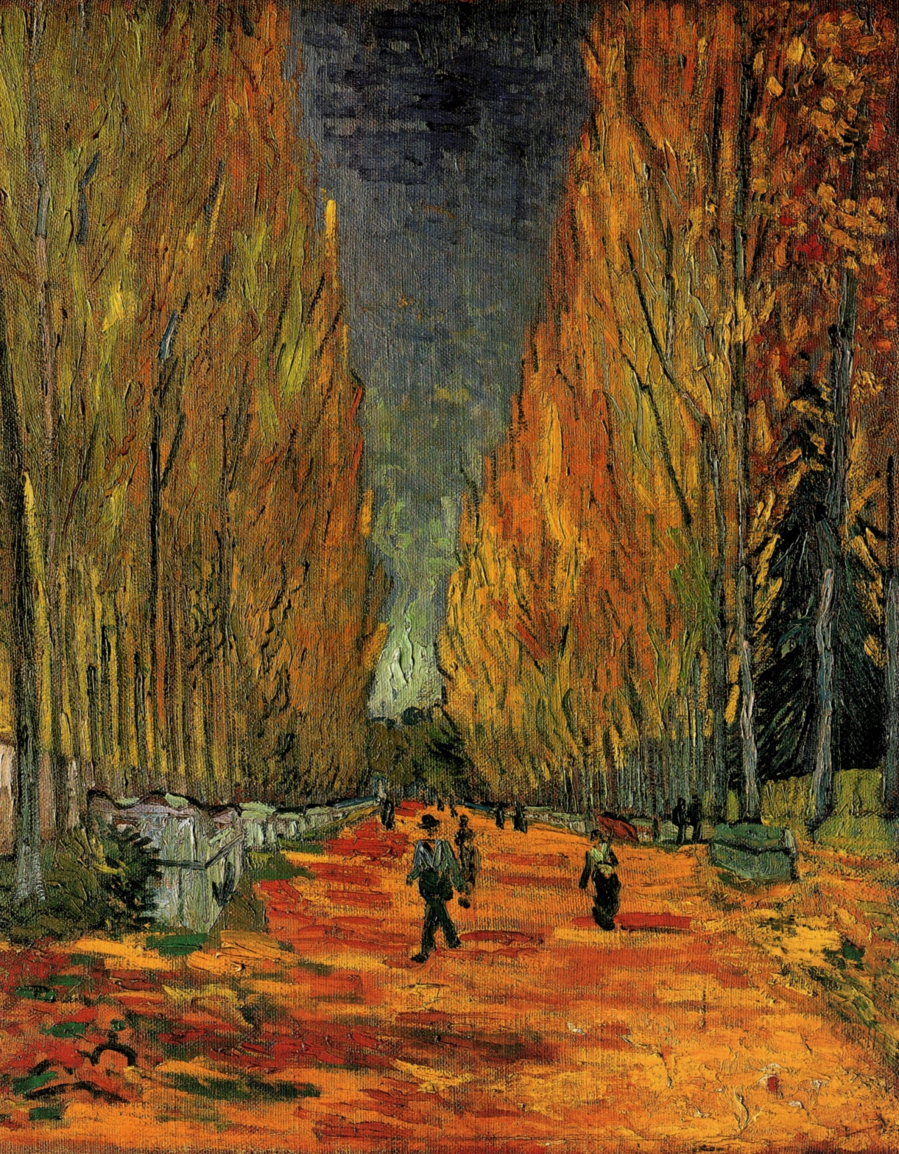
Alyscamps Landscape (Vincent van Gogh, 1888)
Whether sad or happy, the colors of autumn are often deep and warm: yellow, orange, red, brown. As in his autumn landscape paintings at Alyscamps, an ancient Roman cemetery in Arles, France, van Gogh lavished bright yellow on two rows of poplars, contrasting sharply with rows of stone tombstones. Gauguin accompanied him to Alyscamps that day and chose to include in his paintings a different perspective of the place, a romantic tree-lined path marked by the footsteps of beautiful women. In the last days of October 1988, the two artists worked diligently on six paintings at Alyscamps, until a cold rain came and ended the autumn.
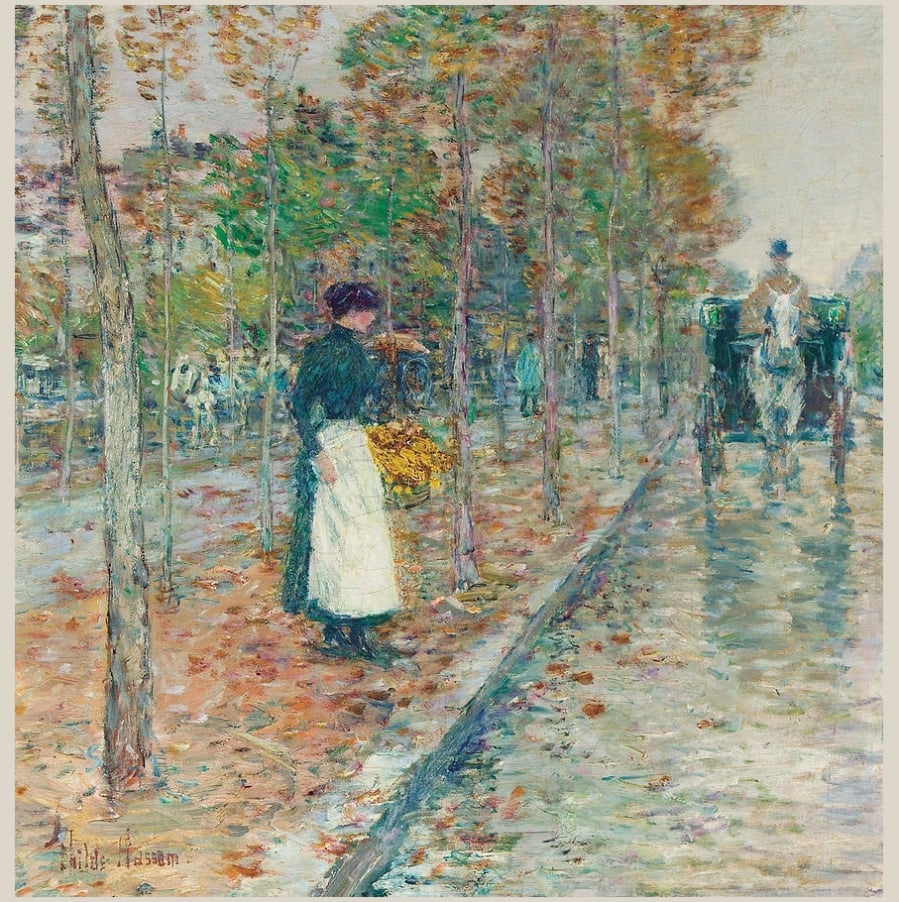
Autumn Boulevard in Paris (Childe Hassam, 1886-89)
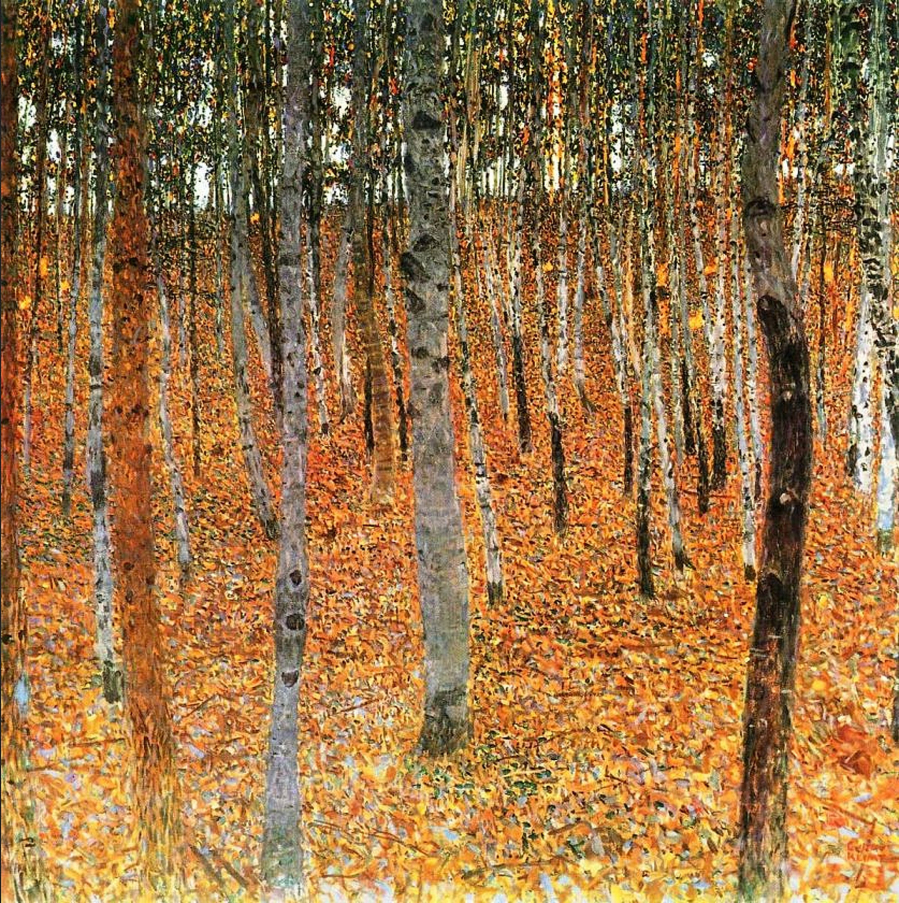
Birch Forest (Gustav Klimt, 1902)
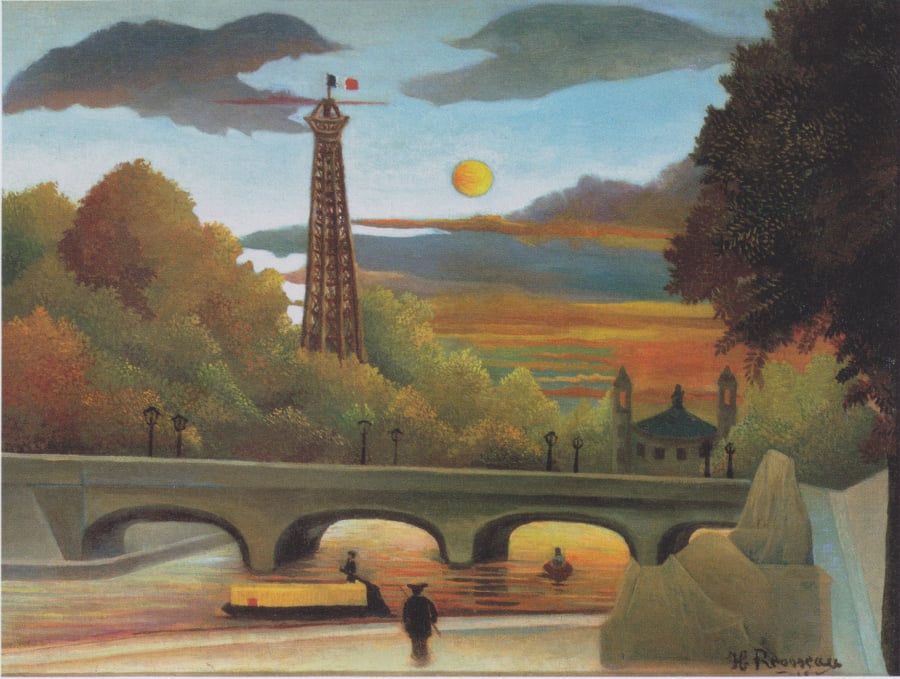
Eiffel Tower at sunset (Henri Rousseau, 1910)
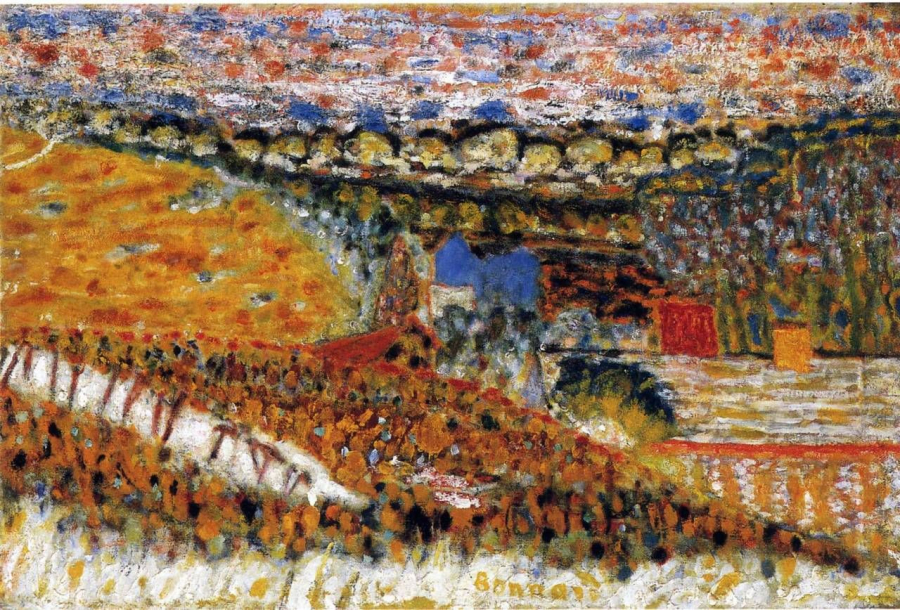
Autumn Scenery (Pierre Bonnard, 1912)

Autumn Trees (Egon Schiele, 1911)
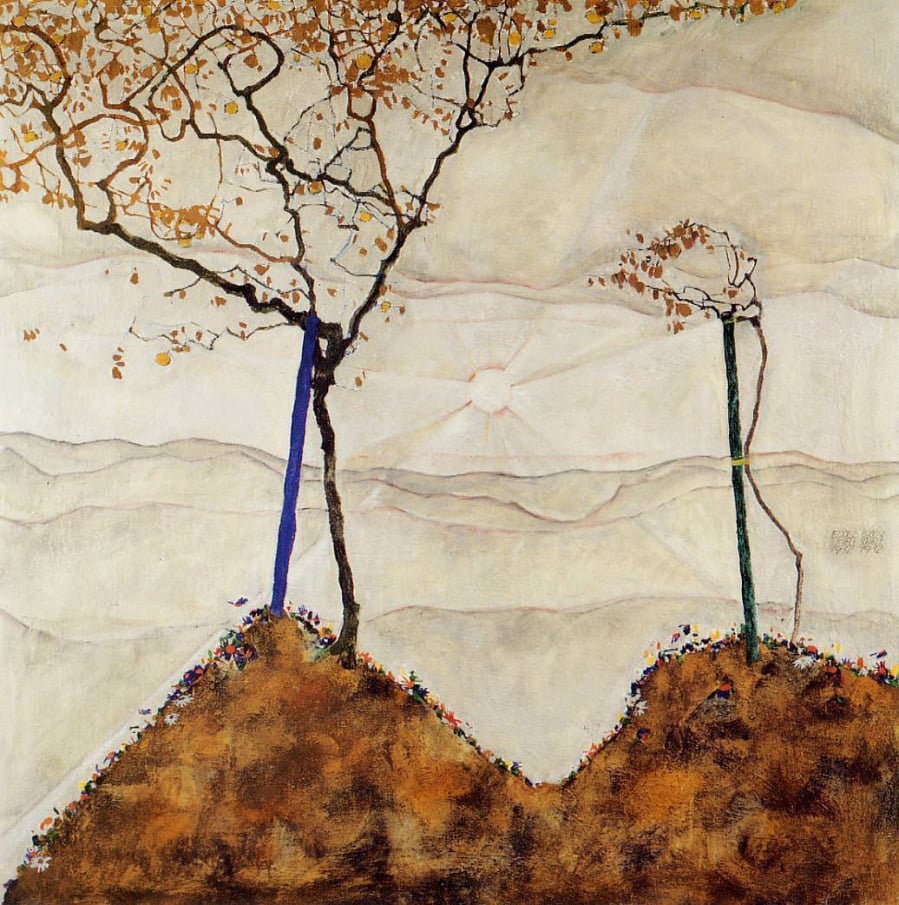
Autumn Sun (Egon Schiele, 1912)
Painters seem to have never spared the effort to gild their autumn paintings, from Childe Hassam, Gustav Klimt to Henri Rousseau, Pierre Bonnard and Egon Schiele. The yellow of the sun, dry leaves, chrysanthemums and ripe rice fields... or the endless yellow of the birch forest in Levitan's paintings have made many people miss Russia. The river meanders along the gently sloping grassy ridge connecting to the forest, evoking a feeling of uncertain nostalgia. The clear blue sky with layers of clouds floating in the gentle breeze and the faint rays of sunlight stretching out, creates the magical shimmering moment of the changing seasons, bright but still hiding a melancholy sadness.
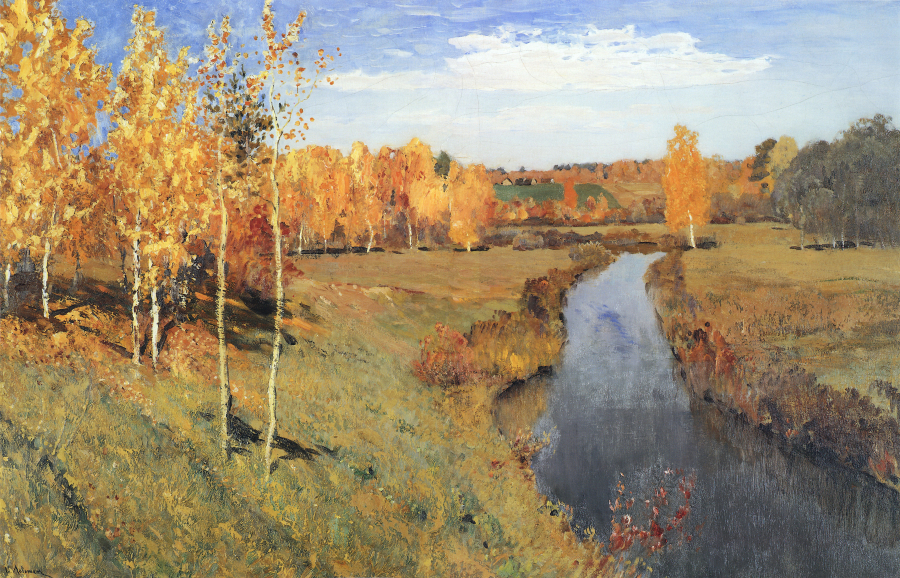
Golden Autumn (Levitan, 1895)

Hyde Park (Camilie Pissaro, 1890)
With incredible color accuracy,Hyde ParkLondon, England looks more beautiful than ever in the paintings of Camille Pissarro, where the beauty of nature is fully displayed without being earthly. The English painter Joseph Mallord William also showed a talent for recreating the magic of nature in watercolors and oils, helping to elevate the genre of landscape painting to its rightful place, as in the breathtaking autumn scene inThe Fountain of LazinessAutumn in Jean-Francois Millet's paintings is tinged with darker colors, but not sad. On the contrary, it is imbued with the peaceful atmosphere of the countryside after the harvest.

The Fountain of Sloth (JMW Turner, 1834)
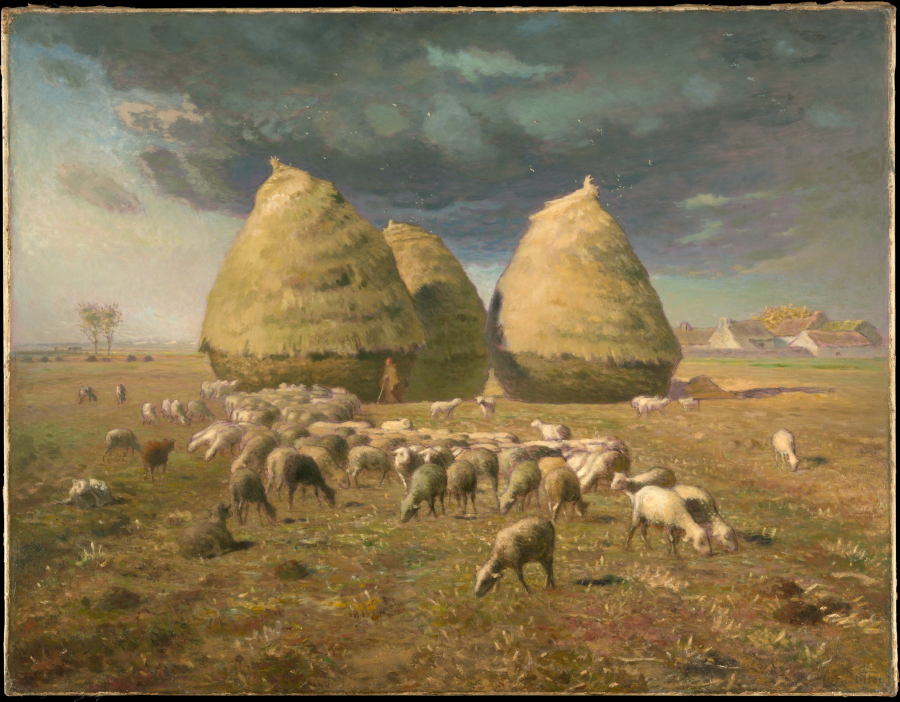
Hayfield (Jean-Francois Millet, 1873)
But autumn is also the season of longing, longing and nostalgia. In the sudden rains, the scenery changes color, making people feel sad and lonely. Why is autumn in Wassily Kandinsky's paintings so cold? Do the red leaves warm people's hearts at all?
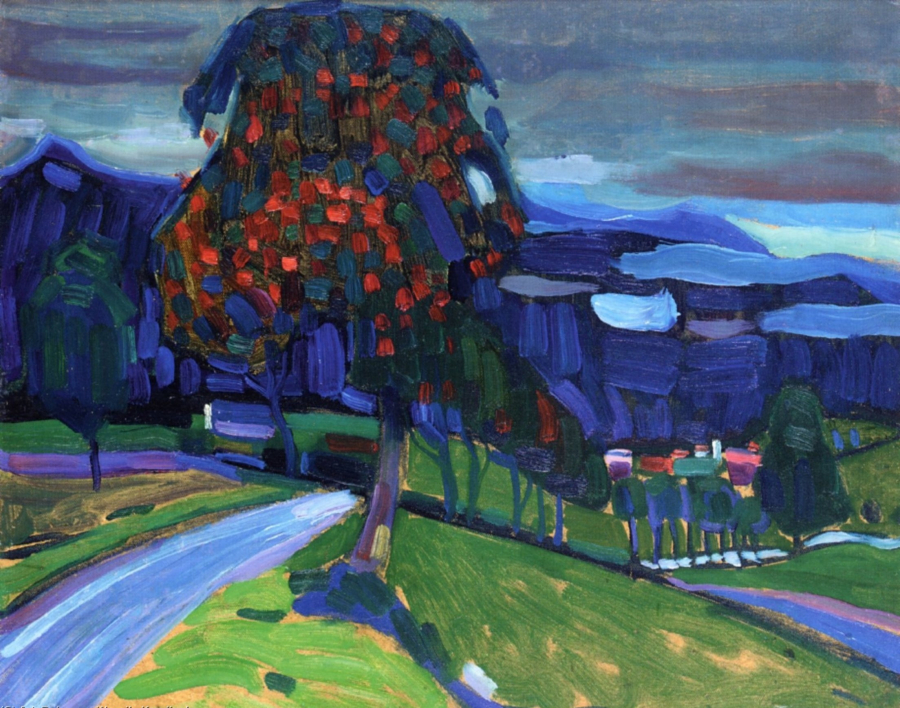
Autumn in Murnau (Wassily Kandinsky, 1908)
Edward Hopper, on the other hand, captures the fading autumn moment in Cape Cod, with the deserted road as seen from the window of a passing car, the sky and earth turning a quiet gray to give way to winter.
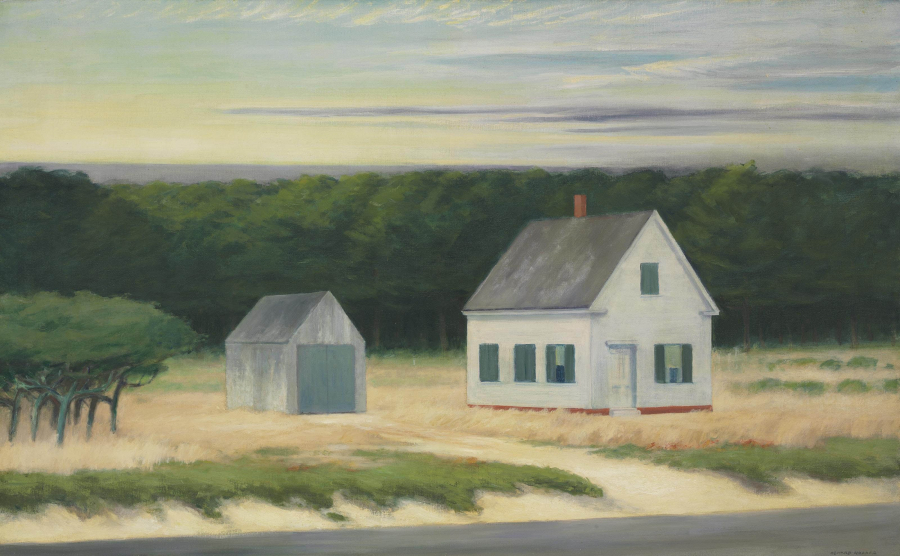
October on Cape Cod (Edward Hopper, 1946)
Paul Klee's autumn paintings are more abstract and the palette is also more diverse. At first glance, they seem simple, childish and innocent, but his paintings used many methods such as watercolor, ink, oil, pastel, combining them together, complex and diverse in both technique and color, from monochrome to polychrome.

The Messenger of Autumn (Paul Klee, 1922)
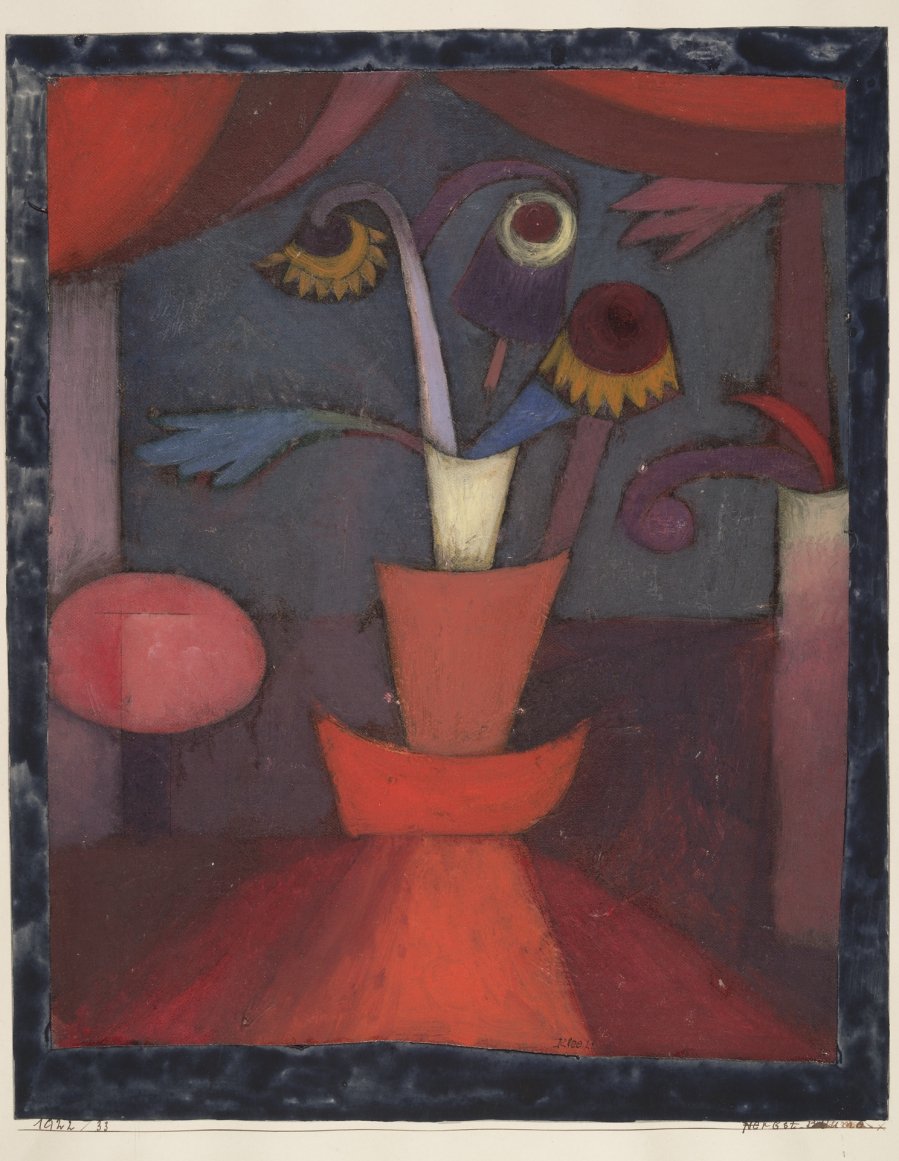
Autumn Flowers (Paul Klee, 1922)

Diana in the Autumn Wind (Paul Klee, 1921)
When it comes to the best autumn landscape paintings, Claude Monet and his works of the French countryside are a must. His use of color and soft brushstrokes are almost perfect. This is evident in his paintings of autumn in Argenteuil orThe road on the island of Saint Martin.
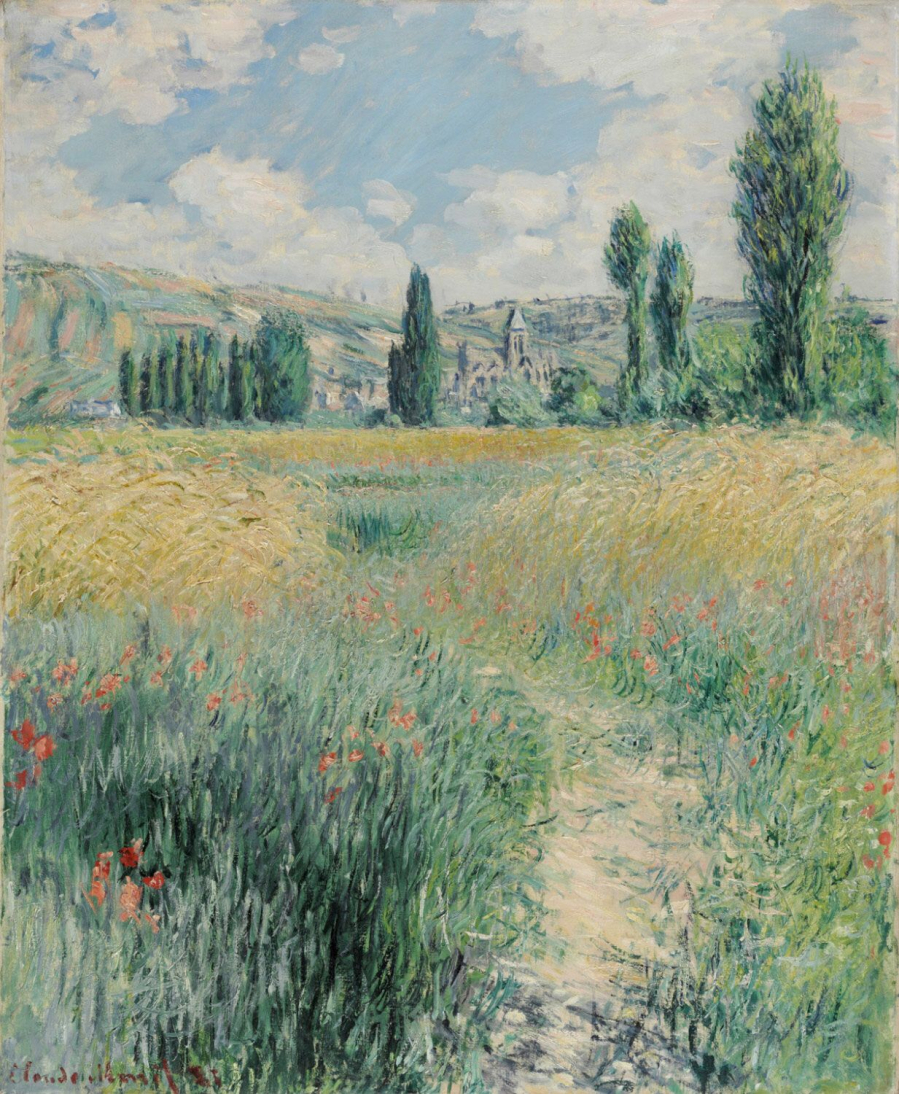
The Road on the Island of Saint Martin (Claude Monet, 1881)
Claude Monet paintedAutumn effect in Argenteuilin late 1873, the time when the Impressionist movement was beginning to flourish in Paris. At that time, Argenteuil was a growing industrial center on the outskirts of Paris and a frequent subject of paintings by many Impressionists, as the small town served as a weekend resort for Parisian urbanites. The painting captures the vibrant colors of a sunny autumn day, shimmering on the water as the trees and sky reflect off the Seine. The striking contrast between the golden foliage and the clear blue water can remind viewers of Japanese woodblock prints.
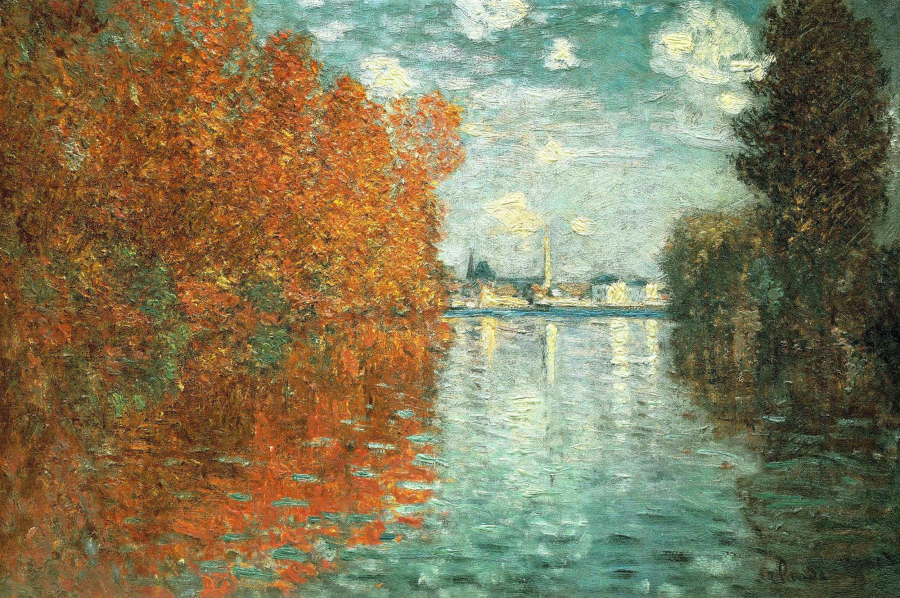
Autumn Effect at Argenteuil (Claude Monet, 1873)
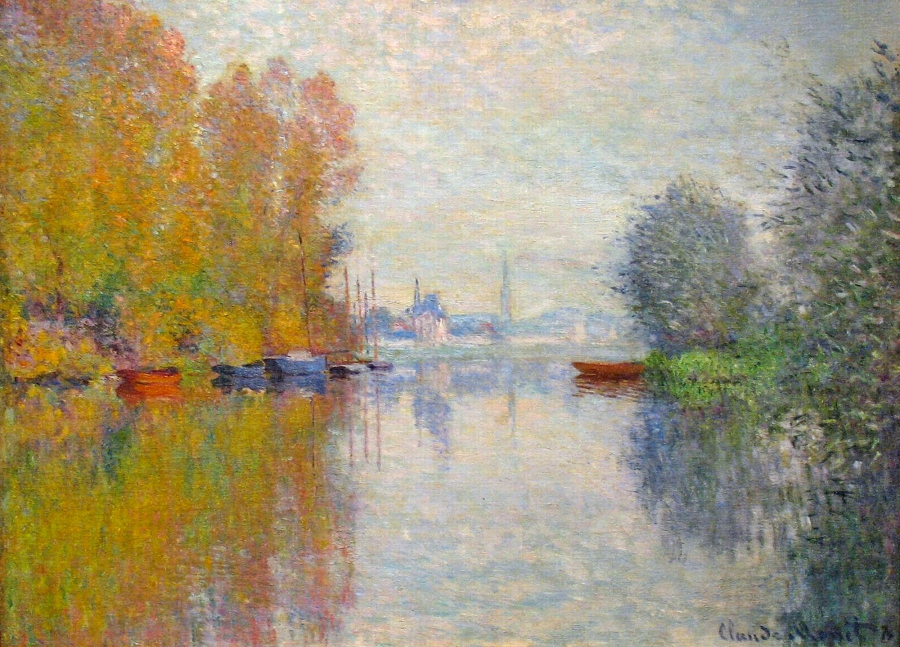
Autumn on the Seine at Argenteuil (Claude Monet, 1873)
With over 30,000 works, Katsushika Hokusai is best known as the author of a series of woodblock prints.36 Views of Mount Fuji, in thereThe Great Wave of Kanagawahas become a symbol of Japan. Hokusai also had another famous series of paintings used as illustrations for booksHiaku-nin-isshiu(Songs of a Hundred Poets). The first poem isEmperor Tenchi, tells the story of the Emperor taking shelter from the rain in a roadside hut while watching the harvesters at work. In the illustration, several travelers pass by a narrow road where farmers are carrying rice. In the distance are a few simple huts hidden among the trees, behind which are low hills looming in the mist. In the middle of the painting, three tall, slender trees stand out against the sunset sky. Hokusai's brushstrokes are graceful and free, although the painting uses somber colors, but is concise and imbued with the spirit of Japanese painting.
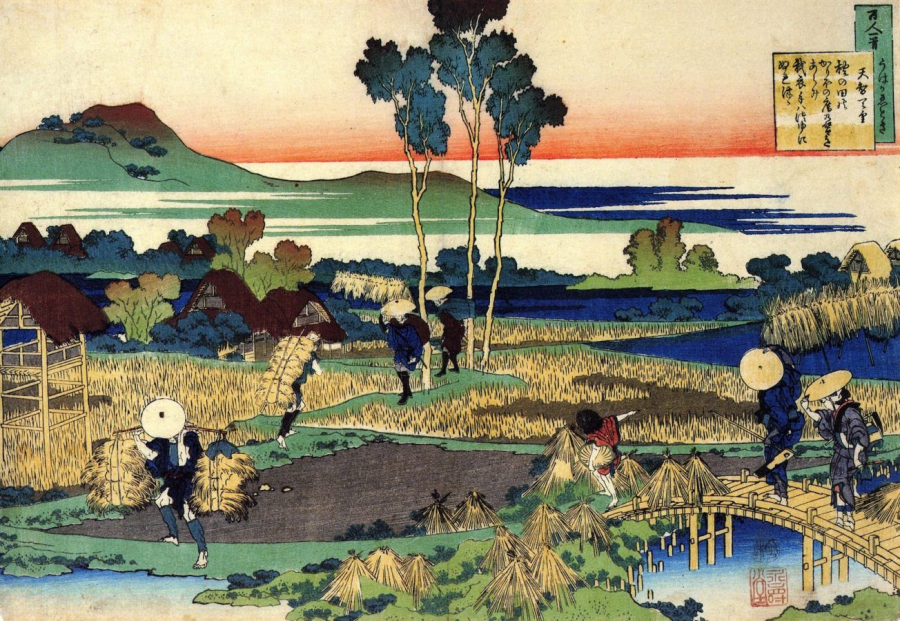
Farmers in Autumn (Katsushika Hokusai)
Jasper Francis Cropsey is often called the “artist of autumn” for his dozens of brilliant autumn landscape paintings, mostly in the Northeastern United States such as New York and New Jersey. The American landscapes depicted in Cropsey’s paintings are often vast, spacious, peaceful, and warm with gorgeous yellow, orange, and red tones. When Queen Victoria visited Cropsey’s exhibition in London, she thought the paintings were not entirely realistic and that the artist had exaggerated the intense colors of the autumn foliage in his homeland. Cropsey had yellow and red leaves sent from America to England to prove to the Queen and the world that the magical beauty of North American autumn in his paintings was completely authentic. This is perhaps the first case in history where an artist had to prove that he “used no filter”!
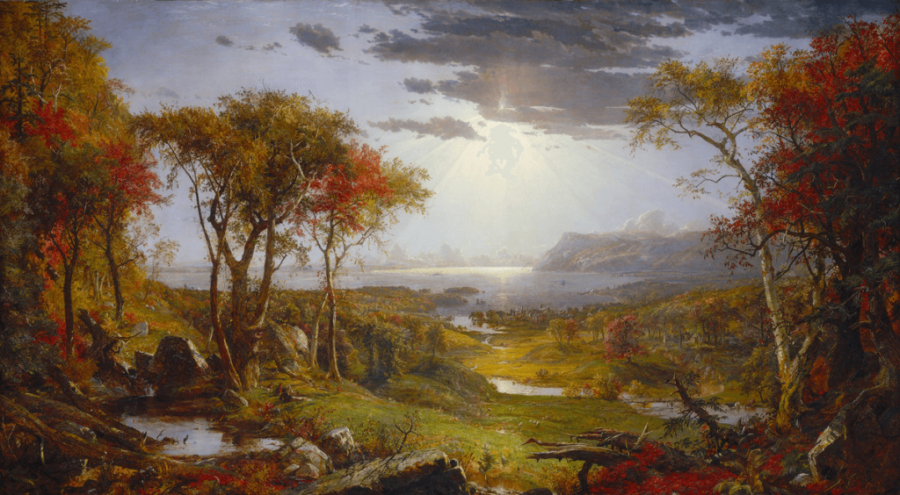
Autumn on the Hudson (Jasper Francis Cropsey, 1860)
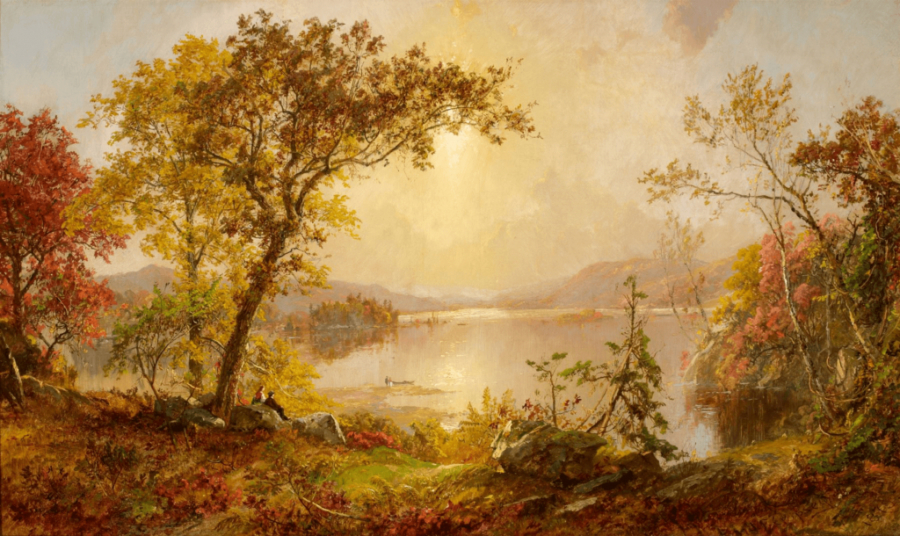
Greenwood Lake (Jasper Francis Cropsey, 1875)

One Autumn Morning (Jasper Francis Cropsey, 1890)
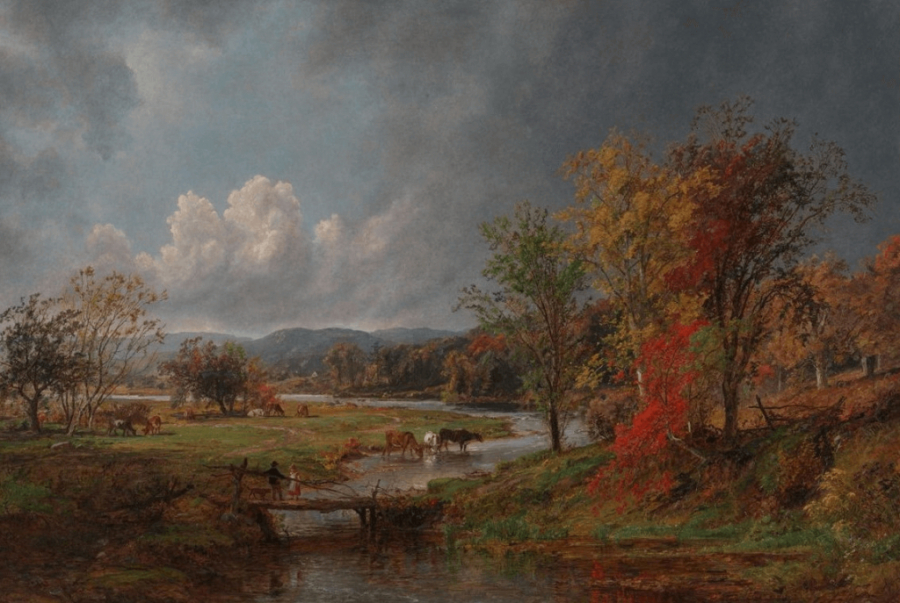
October (Jasper Francis Cropsey, 1887)
For many years, the gentle autumn has been the muse of many talented artists around the world, with a bit of melancholy, of the roads covered with dry leaves, the cool breezes rolling down the streets, the last remaining rays of dry sunlight before sending off summer. Artists seem to be more sensitive when autumn comes, just a rustling falling leaf, a drop of sunlight falling on the threshold is enough for them to pick up their brushes and confide in autumn.





